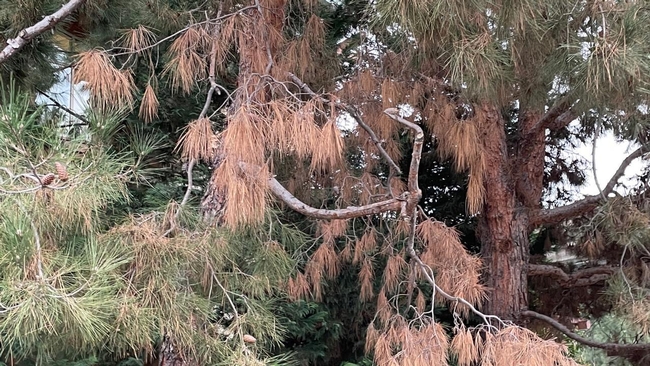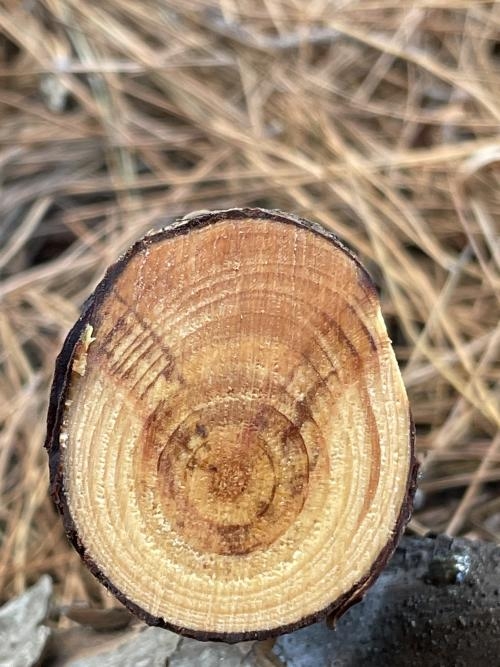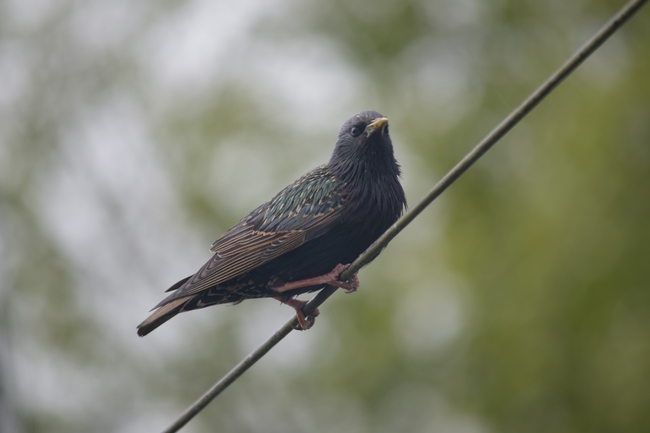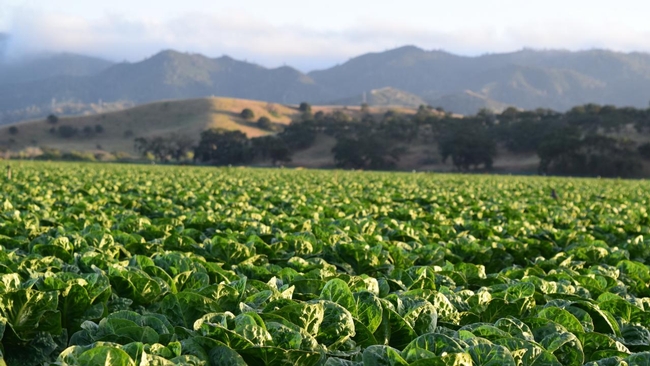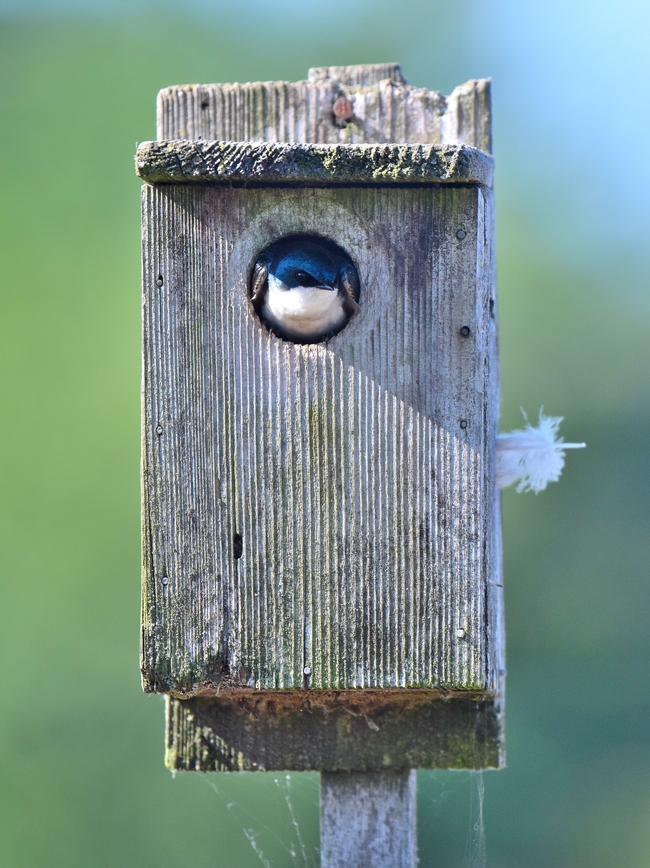Posts Tagged: pathogen
Fungi that causes pine ghost canker detected in Southern California trees
Pathogen native to U.S. but had not infected pines until recently
Fungal pathogens that cause die-back in grape, avocado, citrus, nut and other crops has found a new host and is infecting conifer trees causing pine ghost canker in urban forest areas of Southern California.
The canker can be deadly to trees.
Scientists from University of California, Davis, first spotted evidence that the pathogens had moved to pines during a routine examination of trees in Orange County. Over four years, they found that more than 30 mature pines had been infected in an area of nearly 100 acres, according to a report in the journal Plant Disease.
Akif Eskalen, a professor of Cooperative Extension in the Department of Plant Pathology at UC Davis, suspects drought and other stress conditions brought on by climate change weakened the tree species, making it more susceptible to new threats.
“We have been seeing this on pine trees for the last several years,” he said. “Our common crop pathogens are finding new hosts.”
Pine ghost canker – caused by the fungal pathogens Neofusicoccum mediterraneum and Neofusicoccum parvum – usually infects the lower part of a tree's canopy, killing branches before moving on to the trunks. This dieback in some cases can be deadly.
Points of entry
The pathogens infect a tree by entering through wounds caused by either insects such as red-haired pine bark beetles or pruning – meaning trees in managed or landscaped areas could be at risk. Another route is via tiny natural openings known as lenticels that fungi can make their way through, said Marcelo Bustamante, a Ph.D. candidate in Eskalen's lab who is first author on the paper.
Spores from the fungi can disperse and the higher the prevalence means an increased chance of transmission. Rain, irrigation water and humidity by fog can trigger the right circumstances for the spores to spread, he said.
“The detection of these pathogens in urban forests raises concerns of potential spillover events to other forest and agricultural hosts in Southern California,” Bustamante and others wrote in the report.
Dead branches can indicate a canker. Detecting the fungi is not an emergency but “people should keep an eye on their plants when they see abnormalities,” Eskalen said.
Cankers are localized areas on stems, branches and tree trunks that are usually dead, discolored and sunken. On bark, the spores can look like strings of discolored dots.
The lab has posted a brochure bout how to best manage wood canker diseases.
Tips include:
* Keep your trees healthy: Proper irrigation and maintenance will keep trees strong.
* Prune dead branches to reduce sources of infestation.
* Avoid unnecessary pruning; perform structural pruning only.
Karina Elfar, Molly Arreguin, Carissa Chiang, Samuel Wells and Karen Alarcon from the Department of Plant Pathology contributed to the paper, as did experts from Disneyland Resort Horticulture Department, State University of New York's College of Environmental Science and Forestry, UC Irvine and UC Los Angeles.
Researchers pinpoint which bird species pose food safety risk to crops
E. coli and Salmonella are rare in wild birds, Campylobacter more common
Concerns over foodborne risk from birds may not be as severe as once thought by produce farmers, according to research from the University of California, Davis, that found low instances of E. coli and Salmonella prevalence.
While the research found that the risk is often low, it varies depending on species. Birds like starlings that flock in large numbers and forage on the ground near cattle are more likely to spread pathogenic bacteria to crops like lettuce, spinach and broccoli, according to a study of food safety risk and bird pathogens from the University of California Davis. In contrast, insect-eating species were less likely to carry pathogens.
The findings, published in the journal Ecological Applications, suggest that current practice of removing bird habitats around produce growers' farms over concerns the animals could bring foodborne pathogens into their fields may not solve the problem.
“Farmers are increasingly concerned that birds may be spreading foodborne diseases to their crops,” said Daniel Karp, the senior author on the study and an assistant professor in the UC Davis Department of Wildlife, Fish and Conservation Biology. “Yet not all bird species are equally risky.”
Only one foodborne disease outbreak in produce has been conclusively traced to birds: a Campylobacter outbreak in peas from Alaska. While the bacteria can cause diarrhea and other foodborne illness in humans, it's less of a concern to growers than E. coli and Salmonella, which have been responsible for multiple outbreaks across the nation.
In this study, researchers compiled more than 11,000 bacteria tests of wild bird feces and found that Campylobacter was detected in 8 percent of samples. But pathogenic E. Coli and Salmonella were only found in very rare cases (less than 0.5%).
In addition to the bacteria tests, researchers conducted roughly 1,500 bird surveys across 350 fresh produce fields in Western states and collected more than 1,200 fecal samples from fields. They then modeled the prevalence of pathogens in feces, interactions with crops, and the likelihood of different bird species to defecate on crops to determine risk.
Insect-eating birds pose lower risk
Based on the data, insect-eating birds, such as swallows, present a lower risk, while birds that flock near livestock, such as blackbirds and starlings, are more likely to transmit pathogens.
The data can help the agricultural industry determine risk and take action, such as separating produce crops from cattle lands. They also don't need to treat all birds the same.
“Maybe farmers don't need to be quite as concerned about all types of birds,” Karp said. “Our data suggest that some of the pest-eating birds that can really benefit crop production may not be so risky from a food-safety perspective.”
Removing habitat can backfire
This study and the authors' prior work indicate that removing habitat around farms may actually benefit the species that pose more risk and harm the beneficial, pest-eating ones that are less risky to food safety. This is because many prolific insect-eaters may visit crop fields to eat pests but need nearby natural habitats to survive. In contrast, many of the bird species that most commonly carry foodborne pathogens readily thrive on both cattle farms and produce farms without natural habitat nearby.
Other findings
Insect-eating birds that forage in the tree canopy pose minimal threat because they are less likely to carry foodborne pathogens and come into direct contact with produce. They can also be valuable parts of the ecosystem, particularly if they eat pests that can harm crops. Installing bird boxes could attract the pest-eaters, as well as help with conservation efforts.
“We basically didn't know which birds were problematic,” said lead author Olivia Smith, a postdoctoral researcher at Michigan State University who was at University of Georgia when the paper was written. “I think this is a good step forward for the field.”
Additional co-authoring institutions include James Cook University, UC Berkeley, UC Riverside, University of Kentucky, University of Texas, Virginia Polytechnic Institute and State University, Washington State University, BioEpAr, The Nature Conservancy and Van Andel Institute.
The research was funded by the United States Department of Agriculture and the National Science Foundation.
